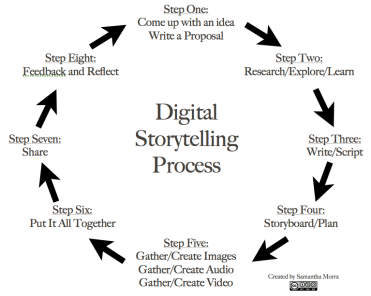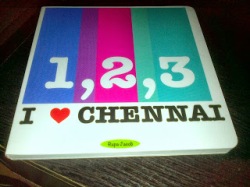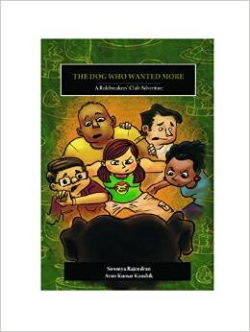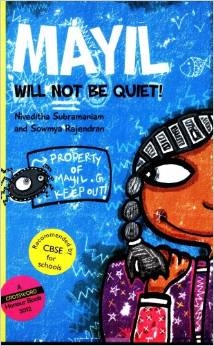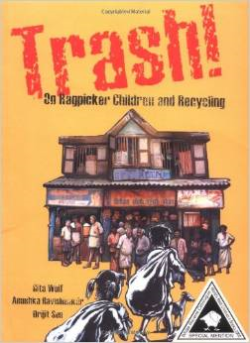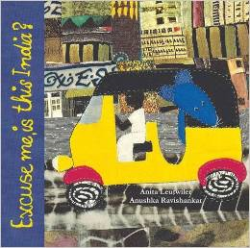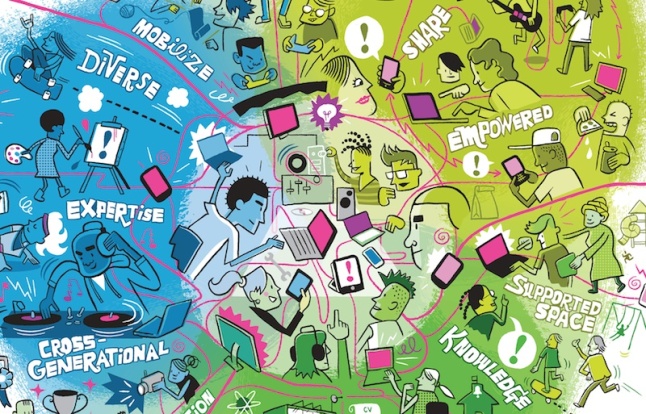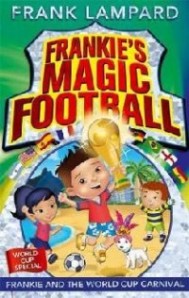A well told story has the ability to stir emotions, trigger ideas and conjure images that will last a lifetime. If storytelling is such an enjoyable process, then it is also important for young people to be taught how to tell a story because it is they who will grow up to be consumers of stories in their adulthood. No matter what field they choose to build a career in, storytelling skills will always come in handy. By coaching them to tell stories, we also ensure that this ancient art form is preserved and passed on. Here are some reasons we need to teach storytelling to young people:
- Storytelling is tradition. It is the oldest form of communication we know as humans. Wisdom was passed on in the form of stories for several generations until we became enveloped by technology and information was measured in kilobytes. With this access to data, young people often stop ‘wondering’ about the world they inhabit. Yet, when a story is told in an engaging manner, they listen. Spellbound. Regardless of age. By coaching young people to become storytellers, we can pass on essential skills and enable them to develop voices that will be heard. Most importantly, we ensure that the tradition of storytelling is kept alive.
- Storytelling creates stronger family ties. When children make a conscious effort to mine stories from their relatives they learn about their roots. Almost everyone has at least one interesting family member or episode in their past. By telling and listening to stories of such people, young people get the opportunity to know about that uncle and that grandmother who may have passed much before their time. They draw tremendous strength from stories about adversity, loss and success that have taken place in their own homes.
- Storytelling is an amalgamation of reading, writing, listening and speaking. When a child reads a story to retell it, he or she learns how to analyze its parts, look for hidden meaning in the metaphors, imagine the characters and their traits, reproduce in his/her own words, build sequence, memory and confident articulation.
- Storytelling builds self esteem. When the audience claps at the end of the performance, the child’s self-worth soars sky-high. This confidence is then carried over to other aspects of life.
- Storytelling develops good listening skills. In order for anyone, leave alone a child, to be able to tell a story well, it is necessary to observe the details in the environment closely to be able to reproduce it in the telling. For example, if a character speaks with a nasal twang, it is important that the storyteller does justice to this defining trait by imitating the tone of voice, which will add richness to the telling. Listening also helps build memory while recalling a story.
- Storytelling builds good creative-writing skills. When children work with folktales, they are encouraged to recreate the story by changing some elements and making their own. They pay attention to the sensorial elements in the story and put their ideas into words that form new connections to the original.
- Storytelling teaches how to engage. When a story is told, the audience are a part of the story. This is why there is no ‘fourth wall’ in the storytelling process. Children learn how to make their telling interesting to the audience by adding various elements such as music, dance, refrains, actions etc.
- Storytelling drives away inhibition. The audience is a part of the storytelling, which means they’re on the storyteller’s side. They don’t threaten the teller by being disinterested, passive listeners; they tell the story along, sing the refrain and chants and give their responses. This makes the environment safe for the inhibited. Mistakes are alright because the teller learns how to quickly improvise and move on.
- Storytelling is a lot of fun. Whether it’s a pourquoi story or a tall tale, a fable or a myth, storytelling opens up the imagination of both the teller and the listener. This can be a hugely enjoyable process, regardless of the end objective. Stories are told for fun as much as they are told to send home a message. Children love being different characters and displaying various emotions as they perform the story. It transports them to a risk-free world, where everything is beautiful. With all these benefits, stroytelling cannot be bad for anyone!
As storytellers we have often wondered why storytelling is not encouraged as an important skill to develop in young people in India. Among adults today, there is enough awareness about this skill; what with groups like Toastmasters, TED etc. making it popular and making them realize the need to build it into their repertoire for personal and professional success.
But adulthood also brings with it limitations—one may want to pick up storytelling at 35, but may not have the time nor the resources to do so. If we were to instill good storytelling skills from a young age, we’d only be making adult lives much easier, would we not?
Keeping in mind all the above, Ever After intends to start a one-of-its kind workshop called the ‘Tribe of Tellers’ for children between 8 and 12 years that will create and nurture young storytellers and coach them to become performers; The workshop will achieve this through fun, yet structured, activities that involve listening, speaking, reading and writing; it will also teach children theatrical techniques such as visualization, voice modulation, body language and expression to enable them to tell a story in an engaging manner, while helping them understand and appreciate the various genres and techniques of storytelling. The camp will culminate in a performance of the stories that the participants will have learnt during the workshop period.
 The first edition of this workshop will commence on Apr 6th and go on until Apr 22nd, at Paradigm Shift in Koramangala. Timings are from 11 am to 1.30 pm on weekdays. Another round of this workshop will take place between May 11th and 24th at Jagriti Theatre’s Summer Carnival.
The first edition of this workshop will commence on Apr 6th and go on until Apr 22nd, at Paradigm Shift in Koramangala. Timings are from 11 am to 1.30 pm on weekdays. Another round of this workshop will take place between May 11th and 24th at Jagriti Theatre’s Summer Carnival.
Inspired by the work of organizations like the National Youth Storytelling Showcase, Youth Storytelling Foundation, Timpanogos Institute, U.S.A., and The Beauty and The Beast Storytellers (Martha Hamilton and Mitch Weiss) that work extensively in the area of coaching young storytellers, we also hope to have this Tribe of Tellers trained to perform at various venues through the year, if all goes well. It is our honest belief that these Tellers will grow to become strong voices of the future and carry on the tradition of oral storytelling.


 One significant example of a story that can be effectively used in teaching social studies and history is Anne Frank’s Diary of a Young Girl. This is a well-known book that children often come across outside the educational context. Its strong narrative thrust and moving emotional content give it all the qualities of a novel. However, it is actually a real-world account of the persecution of Jews during WWII. It is grounded in the political and social backdrop of war-torn Europe. It can be used as a way to study and discuss the events of history, the impact of political turmoil on individuals and to understand the importance of basic human rights in any context. In studying such a rich and personal account of the war, students will find themselves understanding historical events at an emotional level, remembering them not just for the dates and political manoeuvres, but for the human trauma they represent. A contemporary equivalent of the Anne Frank story is Malala Yousufzai, whose tale captures the suffering of schoolgirls in militancy-affected Pakistan.
One significant example of a story that can be effectively used in teaching social studies and history is Anne Frank’s Diary of a Young Girl. This is a well-known book that children often come across outside the educational context. Its strong narrative thrust and moving emotional content give it all the qualities of a novel. However, it is actually a real-world account of the persecution of Jews during WWII. It is grounded in the political and social backdrop of war-torn Europe. It can be used as a way to study and discuss the events of history, the impact of political turmoil on individuals and to understand the importance of basic human rights in any context. In studying such a rich and personal account of the war, students will find themselves understanding historical events at an emotional level, remembering them not just for the dates and political manoeuvres, but for the human trauma they represent. A contemporary equivalent of the Anne Frank story is Malala Yousufzai, whose tale captures the suffering of schoolgirls in militancy-affected Pakistan. scientific method and the discoveries that it has spawned. Visual media, like the new production of the Cosmos series (presented by Neil deGrasse Tyson) incorporate snippets of biographical information about the astronomers, physicists and chemists behind the discoveries that make our conception of the universe what it is. Students retain information about rules and processes by associating them with the dynamic, brilliant individuals who make up the field of science. Examples of popular (and important) written word narratives include The Immortal Life of Henrietta Lacks by Rebecca Skloot and The Double Helix by James D. Watson (chronicling the research and intrigue that led to the discovery of DNA). Skloot’s story about Henrietta Lacks discusses the ethical questions that emerged when the cancer cells of a poor Black American woman were used, without the
scientific method and the discoveries that it has spawned. Visual media, like the new production of the Cosmos series (presented by Neil deGrasse Tyson) incorporate snippets of biographical information about the astronomers, physicists and chemists behind the discoveries that make our conception of the universe what it is. Students retain information about rules and processes by associating them with the dynamic, brilliant individuals who make up the field of science. Examples of popular (and important) written word narratives include The Immortal Life of Henrietta Lacks by Rebecca Skloot and The Double Helix by James D. Watson (chronicling the research and intrigue that led to the discovery of DNA). Skloot’s story about Henrietta Lacks discusses the ethical questions that emerged when the cancer cells of a poor Black American woman were used, without the  knowledge and sanction of her family, to fuel a scientific endeavour and create an immortal line of cancer cells which are used in medical research till date. Skloot also provides information about what exactly biologists learned about the disease from Lacks’ cells. These are, effectively, the stories of the units that make up human life.
knowledge and sanction of her family, to fuel a scientific endeavour and create an immortal line of cancer cells which are used in medical research till date. Skloot also provides information about what exactly biologists learned about the disease from Lacks’ cells. These are, effectively, the stories of the units that make up human life. Krishnan writes based on everyday observations of the environment. These include fleeting anecdotes about the seemingly mundane lives of pigeons and house geckos; brief sketches of mythological animals; discussions around climate change and deforestation; precious encounters with some of India’s most exotic wildlife; and stories of clashes between humans and the natural world. He depicts nature as a dynamic element of our own routine lives, rather than presenting the environment as a static system with elements that must be understood from a purely scientific point of view. The stories of Krishnan’s interactions with nature draw attention to the importance of empathy in learning about other life forms. His gentle humour and understated anthropomorphism convey his genuine affection for the world he describes. The essays encourage young readers to be emotionally engaged with nature.
Krishnan writes based on everyday observations of the environment. These include fleeting anecdotes about the seemingly mundane lives of pigeons and house geckos; brief sketches of mythological animals; discussions around climate change and deforestation; precious encounters with some of India’s most exotic wildlife; and stories of clashes between humans and the natural world. He depicts nature as a dynamic element of our own routine lives, rather than presenting the environment as a static system with elements that must be understood from a purely scientific point of view. The stories of Krishnan’s interactions with nature draw attention to the importance of empathy in learning about other life forms. His gentle humour and understated anthropomorphism convey his genuine affection for the world he describes. The essays encourage young readers to be emotionally engaged with nature.
